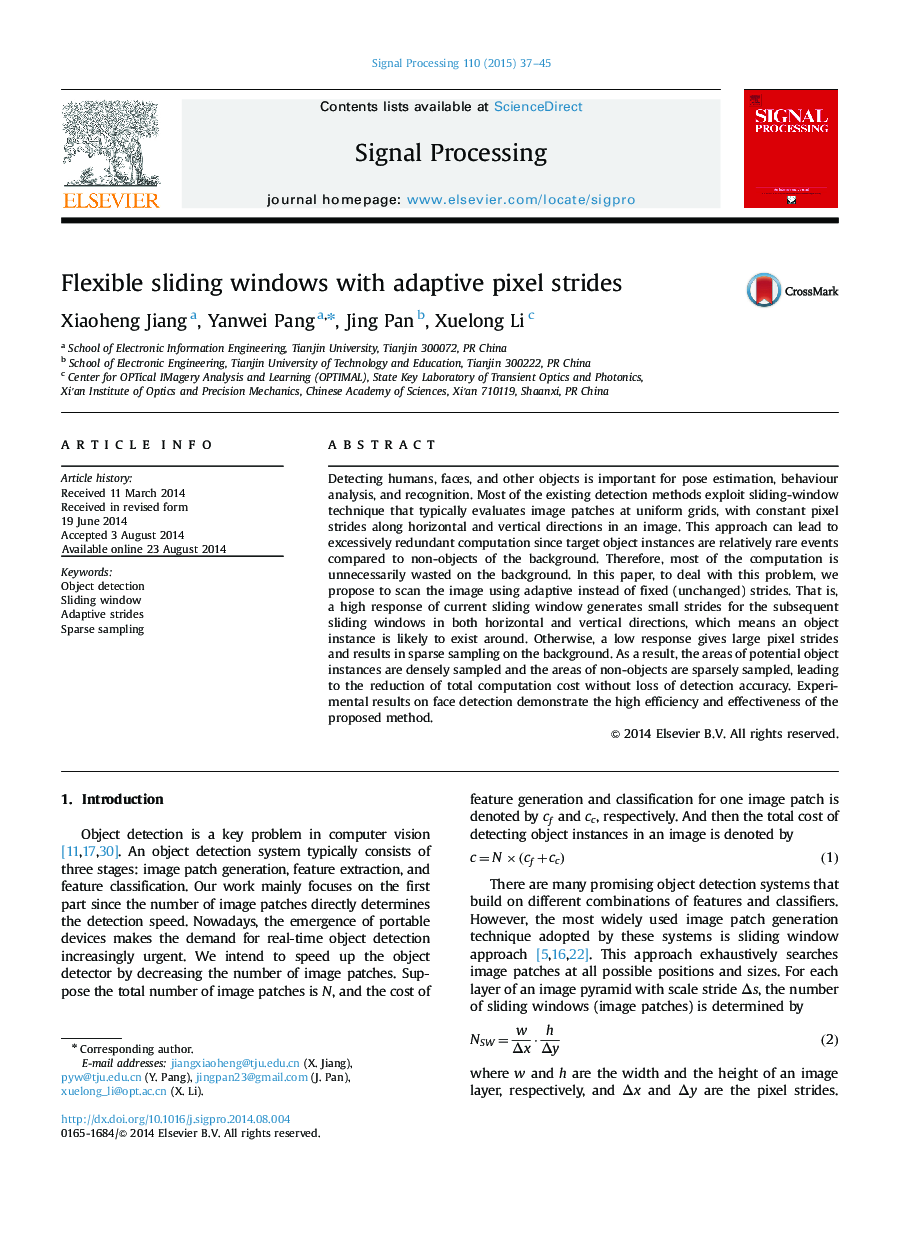| Article ID | Journal | Published Year | Pages | File Type |
|---|---|---|---|---|
| 6959305 | Signal Processing | 2015 | 9 Pages |
Abstract
Detecting humans, faces, and other objects is important for pose estimation, behaviour analysis, and recognition. Most of the existing detection methods exploit sliding-window technique that typically evaluates image patches at uniform grids, with constant pixel strides along horizontal and vertical directions in an image. This approach can lead to excessively redundant computation since target object instances are relatively rare events compared to non-objects of the background. Therefore, most of the computation is unnecessarily wasted on the background. In this paper, to deal with this problem, we propose to scan the image using adaptive instead of fixed (unchanged) strides. That is, a high response of current sliding window generates small strides for the subsequent sliding windows in both horizontal and vertical directions, which means an object instance is likely to exist around. Otherwise, a low response gives large pixel strides and results in sparse sampling on the background. As a result, the areas of potential object instances are densely sampled and the areas of non-objects are sparsely sampled, leading to the reduction of total computation cost without loss of detection accuracy. Experimental results on face detection demonstrate the high efficiency and effectiveness of the proposed method.
Related Topics
Physical Sciences and Engineering
Computer Science
Signal Processing
Authors
Xiaoheng Jiang, Yanwei Pang, Jing Pan, Xuelong Li,
